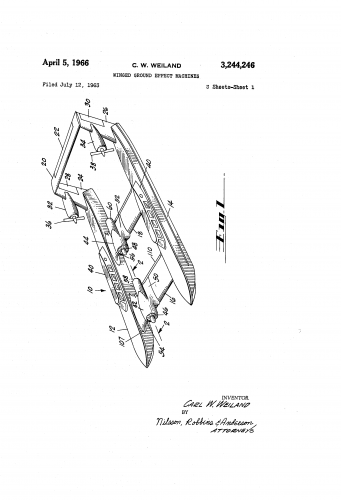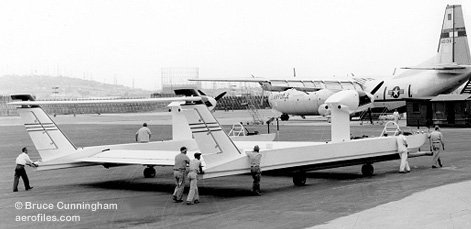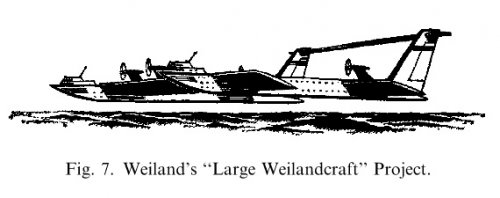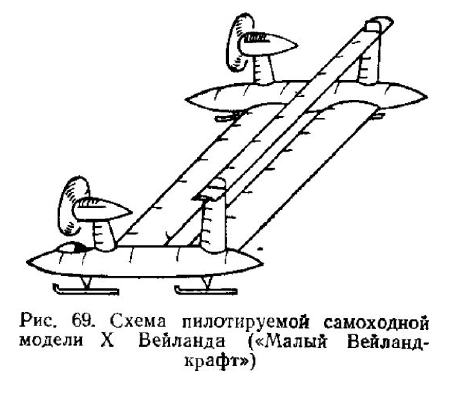This is what Aerofiles has to say about this contraption:
Weilandcraft 1964 = 2pOFb; two 275hp unspecified tractors on pylons; span
(beam): 32'0" length: 52'0". Carl Weiland. Primarily wooden construction, the
catamaran hydrofoil design was proposed by Swiss inventor Weiland to Douglas
Co as a large-load transport that would "fly" in ground-affect more economically
and at greater speeds (v est: 115) than surface vessels. After many water tests
(photo background suggests Long Beach harbor), on 3/4/64 at about 75 mph, the
nose lifted the front skis, then the rear skis broke free, so it apparently flew to
some extent. Its flight, however, ended abruptly after the nose continued to rise
despite reduction on power—performing like some flat-bottom speedboats do
before they flip? It reads like a stall occurred instead and the craft hit the water
nose-high hard enough to pretty much disassemble it. Further development was
dropped. A comprehensive, illustrated article by Bruce Cunningham about this
rarity was in the Spring 2007 issue (52/1) of AAHS Journal.




